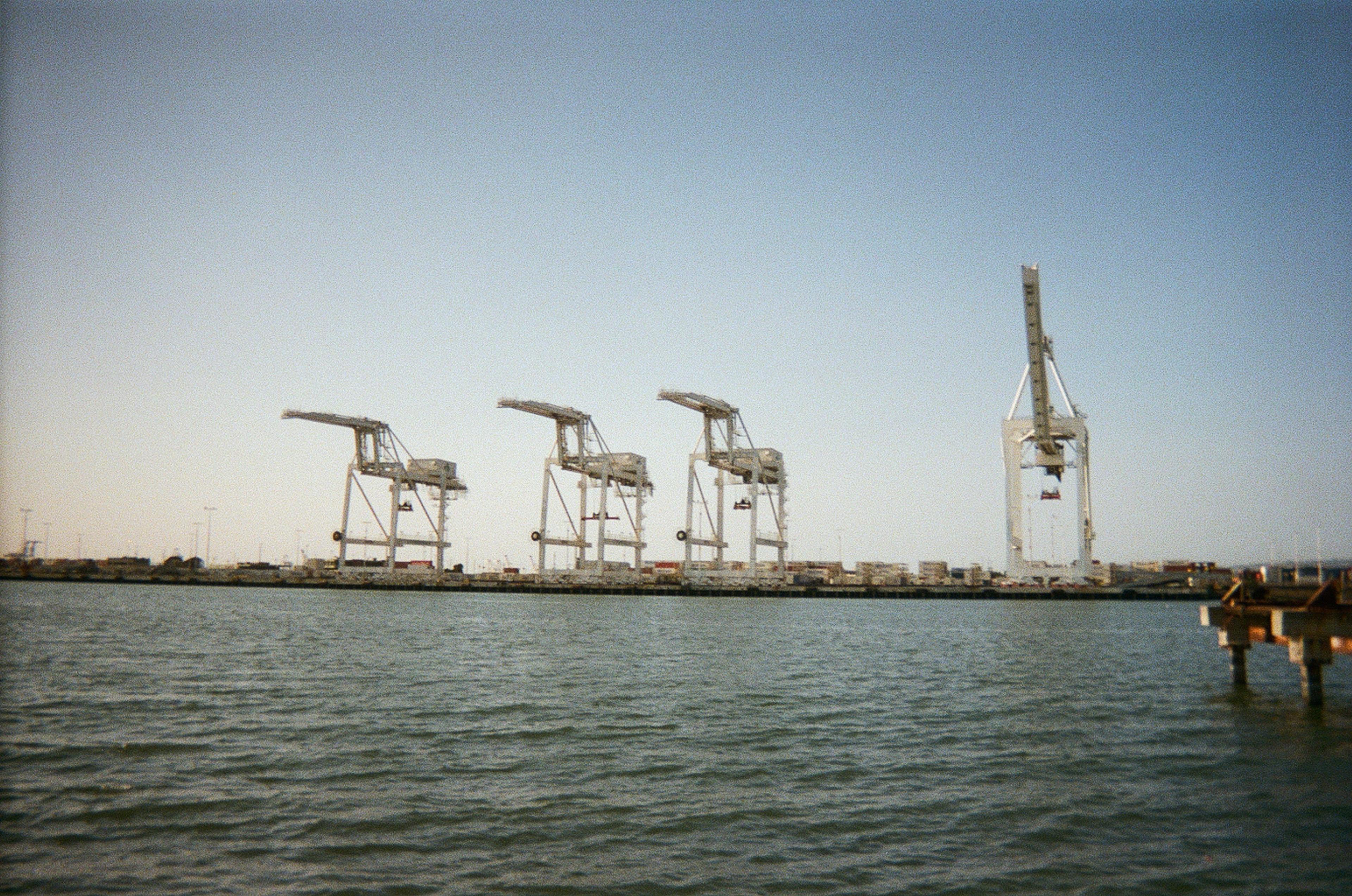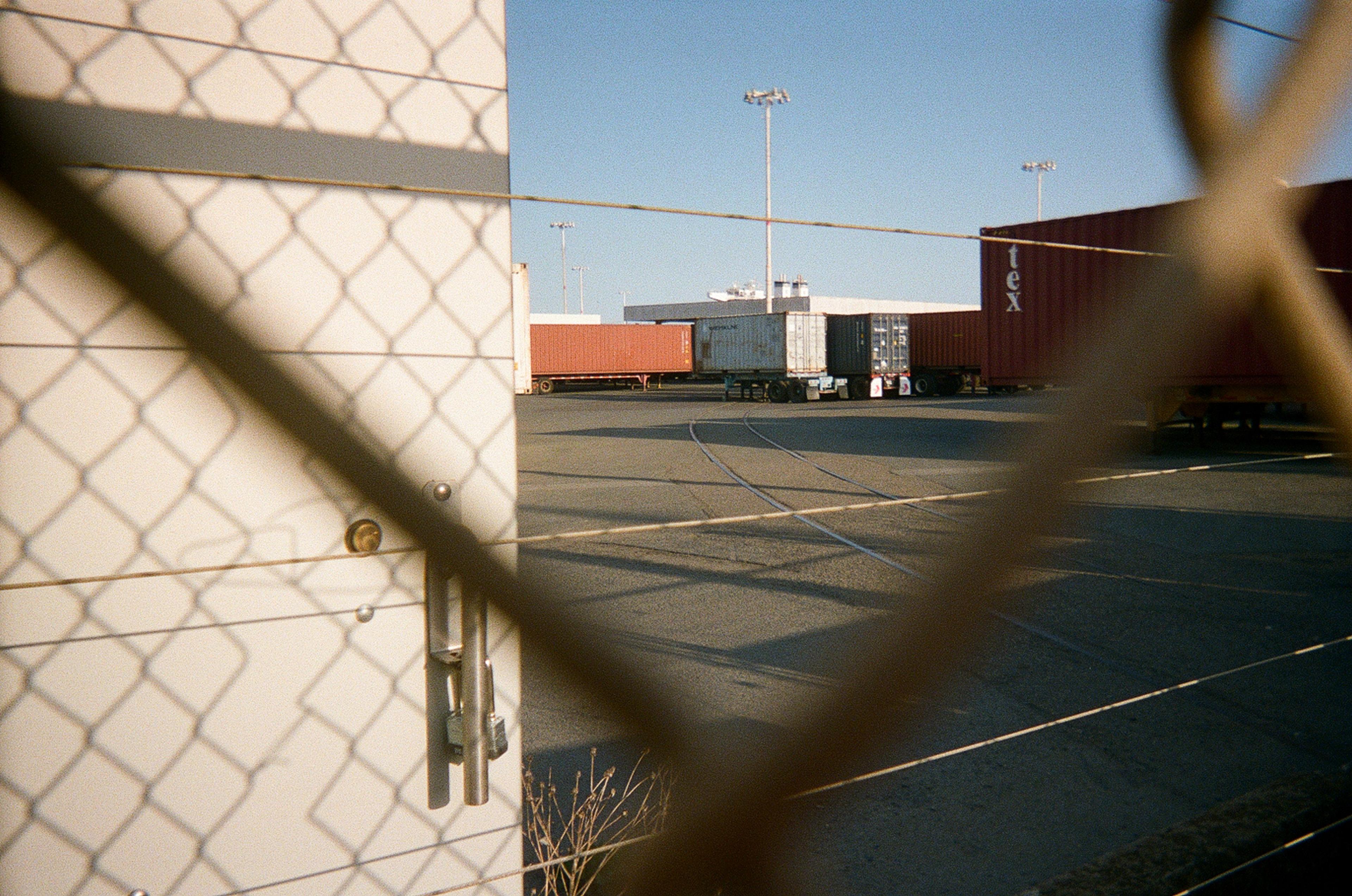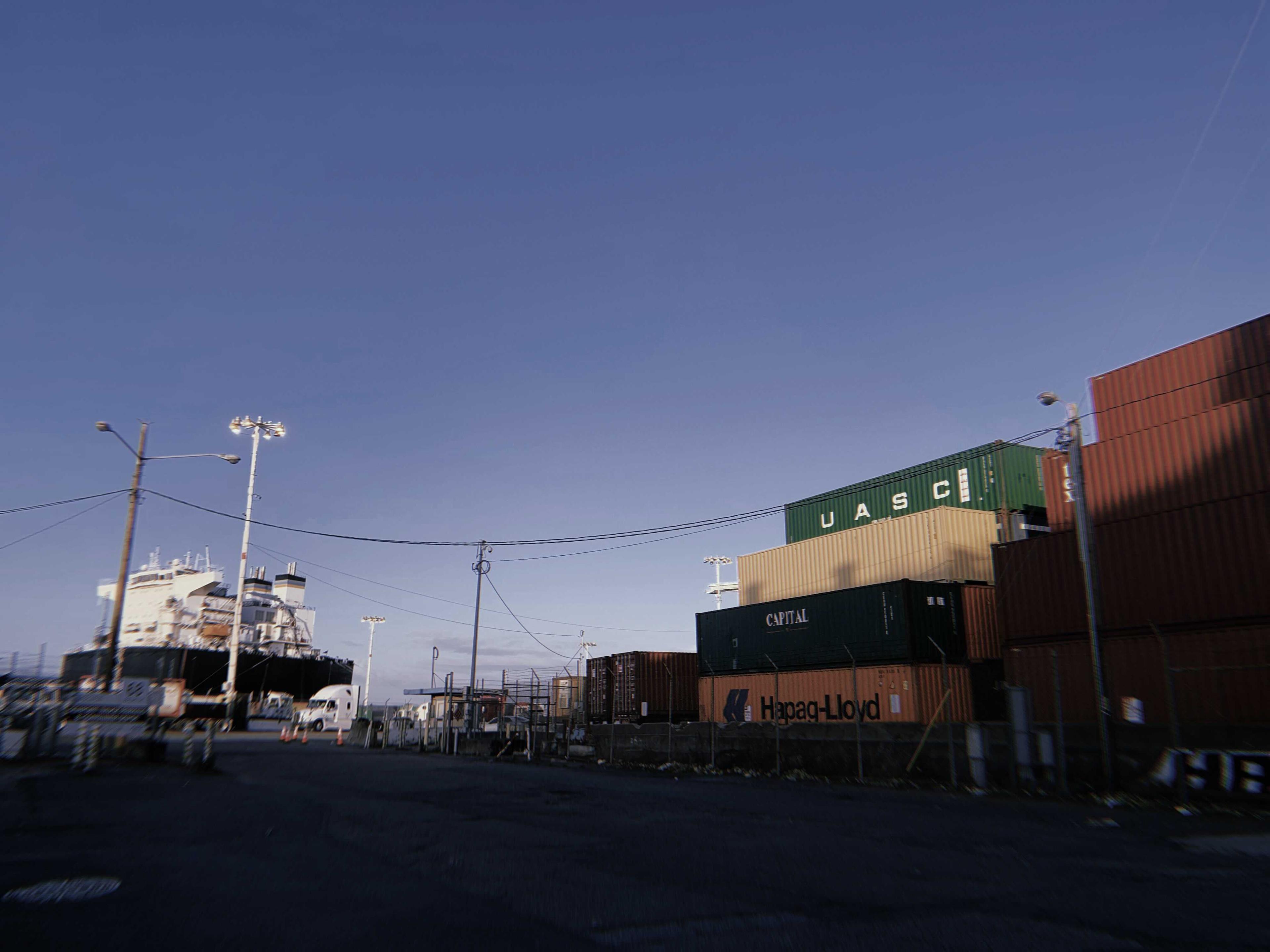A USDA partnership with the Port struggles to help American farmers export products.
On the first day in February, the USDA announced it would be opening a pop-up container yard in partnership with the Port of Oakland. Farmers had been unable to ship millions of dollars worth of product due to a lack of empty containers over the past two and a half years, and the pop-up yard, officials claimed, would give them speedy access to empties.
But that didn’t happen. Three months after the yard opened, activity is inconsistent at the yard, and farmers are still in need of containers to export their product. They wonder whether USDA funding will be efficiently used, and what authorities have planned to alleviate the supply chain issues. But the powers that be are short on answers, leaving farmers and industry groups wondering whether to wait for some semblance of pre-pandemic “normal” to return in order to sell their crops at full capacity.
“We have good people. We have good product that’s ready to go. But we’re hitting the point of seeing price degradation on product and losing global market share if we don’t get products back into stores around the world,” said Aubrey Bettencourt, President and CEO of the Almond Alliance of California.
“We have good product that’s ready to go. But we’re hitting the point of seeing price degradation on product... if we don’t get products back into stores around the world.”
The pop-up container story highlights how many players are involved in the American produce supply chain, and how difficult it is to align their incentives. The yard was meant to support farmers, but has encroached on land used by truckers, and has required a delicate negotiation between the companies that deliver containers, those that operate shipping yards, and those that direct truckers. Each has faced varying incentives that constrain the pop-up yard’s usefulness to them. Some container companies are now using the yard as a staging area for empty containers, but many have refused to participate. Truckers fume the yard makes it harder for them to service the port. And American farmers who route through Oakland still report difficulty getting their products into containers headed overseas.
The Port Promise

Plans for the yard were announced with much fanfare. A collection of industry groups, truckers, container lines, and farmers had participated in weekly meetings for at least two months, offering their insight. January press releases from the USDA and Port of Oakland reached several local outlets who forecasted a bright future for the yard. U.S. Transportation Secretary Pete Buttigieg and U.S. Agriculture Secretary Tom Vilsack were quoted on the releases.
“This partnership with the Port of Oakland builds on our aggressive approach to addressing challenges within the supply chain,” Vilsack said, “and sends a strong signal that we are committed to working across the Administration and with state, local and private partners to mitigate complex port capacity and congestion issues and to keep American agriculture on the move.”
Agricultural exports made up approximately 37% of the Port of Oakland’s exports in 2019, worth about $21.7 billion. According to the Port, that’s historically made up for approximately half of containerized exports leaving Oakland. However, the Port said agriculture increased to about 45% of total containerized exports in 2021.
That’s because overall exports of all types of commodities were also falling. By the end of 2021, total exports (measured in “twenty-foot equivalent units,” or TEUs) were approximately 8.4% lower than they were in 2019. In the case of almond farmers, Bettencourt says the inability to ship-out product has resulted in a $1 per pound decrease in median pricing — an overall loss of about $1 billion, industry wide, since just September of last year.

According to the Port and USDA, the container yard would give agricultural entities expedited access to empty containers. Carriers, who had been shipping empty containers all the way back to Asia because that was cheaper than dealing with backlogs at the Ports, would be more incentivized to drop-off containers because there would be a clear, accessible area for them to do so. Truckers would be also incentivized to pick up these containers because they didn’t have to wade through traffic at marine terminals to get them.
A Solution in Search of a Problem
The Port chose the old Howard Terminal, a small marine terminal which many of today’s larger container ships have outgrown. Port of Oakland officials argue the 22 acres of waterfront land are otherwise useless. “It’s not super busy or anything like that, not crowded by any means,” said Robert Bernardo, the Port’s director of communications. “It’s just a 22-acre yard that is pretty much open to be used.”
But many truckers would likely disagree with that statement. Truck companies rent space at the Terminal and park between occasional containers. Signage at the Terminal indicates that it is a “Seaport Truck Parking & Container Depot.” In January, about a dozen of the smallest trucking companies were evicted from the land, weeks before plans for the pop-up container yard was announced. At the time, those truckers didn’t point their finger at the pop-up yard. Instead, they said they thought they had time — they knew they would be evicted eventually, they said, but in a few years when the city begins to build the new Oakland A’s stadium, also proposed for the site.
Bernardo did not respond to requests to comment on whether truckers were evicted for the creation of the pop-up yard. He also did not respond to questions about a potential connection between the pop-up yard and the Port’s desire to build a new A’s stadium at Oakland Terminal.
That’s what was planned. But plans don’t always equate with reality. Two months after the yard was announced, it’s taken on a new form. In addition to holding boxes, the space is also used as a staging area for empty containers waiting for exports. “Inventories are always in constant flux,” said Bernardo. “Currently there are enough empties to cover demand.”
But trucking and agricultural sources we spoke with disagree. They say the yard has had little impact on agricultural exporters struggling to move their product, and is being used for other purposes. A significant portion of the containers stored at the yard are from carriers who do not have locations ready for importers to return empties once they offload their product, especially those from Wan Hai and Hapag-Lloyd. (Hapag-Lloyd says they have rerouted 1,605 empties for export supply since the yard opened). The company which the Port of Oakland has contracted to operate the yard, Pacific Crane Management Company, did not respond to numerous requests for comment. Neither the USDA or the Port of Oakland would provide a target budget, nor how many containers would be moving through the yard if it were successful.

The yard isn’t solving agricultural exporters‘ problems in part because the very conditions which made the yard seem necessary have changed. While containerized export volume fell 16.7% from March 2021 to March 2022, the imports of empty containers have shrunk even more, at 19.6%, while imports of full containers have only increased 3.2%. Under these conditions, agricultural exports have reached 60% of the port’s overall containerized exports, according to Bernardo — a higher percentage of overall exports than had left the Oakland pre-pandemic, and a number that slowly remakes the losses of the past two years.

Container line bottlenecks
Container lines have also started bringing containers back to the port through other avenues. Ships which began skipping Oakland in an effort to make up for lost times after historic logjams at the southern California ports of Long Beach and Los Angeles during the pandemic, for example, were convinced to begin calls at Oakland again. Hapag-Lloyd, for example, restored service to Oakland along its AL5 service. So have MSC and ONE.
Nils Haupt, corporate communications director for Hapag-Lloyd, also said the company has begun routing containers by land from Chicago. Haupt said the company brings about 200-300 containers per vessel along the Al5 service, which arrive at Oakland every Wednesday, and approximately 150 containers from Chicago every two-to-three weeks. He also says that he no longer sees congestion at the Port of Oakland, which is at 80% utilization.

But some carriers aren’t so cooperative, says Bettencourt, who argues that the main issue is container lines which, as international companies, cannot be forced to honor their contracts with agriculture or to participate in the pop-up container yard. Several carriers have pulled out of participating in the container yard, she says. Others simply refuse to communicate well with farmers who are economically reliant on them, but who do not have leverage over the container companies. Whether or not there is a place for carriers to drop-off empty containers has little impact on whether they will spend time and energy doing so, Bettencourt explains.
“If they say they’re going to arrive and be receiving for four days, they need to stay there for four days. They can’t call us and say ‘oh, nevermind, it will be four hours,’ which has happened,” she says. “We need to sit down with the carriers, and we need the leadership of federal and state officials to help us do that — because if there’s something the carriers need, we want to know that.” She notes government entities have been fairly supportive as-is. MSC, ONE, Evergreen, and CMA-CGM did not respond to requests for comment.
“If [carriers] say they’re going to arrive and be receiving for four days, they need to stay there for four days. They can’t call us and say ‘oh, nevermind, it will be four hours,’ which has happened.”
Chassis rules, which indicate which types of chassis a carrier allows their containers to be carried with, create additional, lingering bottlenecks. Fewer chassis that can be used for a diverse range of containers are available than last summer, trucking and chassis companies say. “We simply do not have Daily Rentals available,” said Greg Moore, Chief Commercial Officer at Flexi Van. “Demand and Utilization in pools is at an all time high.”
Devine Intermodal President Karen Vellutini says that truckers must now spend additional time coordinating the right parts before traveling down to the Central Valley. “It’s put a crimp in our overall productivity,” she says. “The goal is to get trucks in and out of the Port twice a day, and now we only hit that goal two or three times a week.”
“The goal is to get trucks in and out of the Port twice a day, and now we only hit that goal two or three times a week.”
Unfortunately, there’s been little progress made on changing box rules or establishing better communication between trucking companies, carriers, and industry groups. Both the House and Senate recently passed companion bills called the Shipping Reform Act, which attempts to require international maritime shipping companies to comply with US regulations when charging late fees. Supporters say this would require carriers to give legitimate reasons for declining shipping opportunities at US ports by requiring carriers to prove adequate reasons for the charges. Critics, however, say it’s largely toothless, because the carrier data often used to make these decisions is not independent or unbiased — and drayage truckers, forwarders and shippers often do not have the resources to provide their own data as a counterpoint.
Bettencourt supports the Act, but worries critics may be right. She also says that, like all federal laws, it will take some time to take effect. The USDA and Port of Oakland were unwilling to suggest other potential solutions, and the USDA, which promised to fund 60% of the project, says the budget is not yet finalized.
In response to emailed questions as to whether the pop-up yard was operational for agricultural use, the USDA did not reply.







